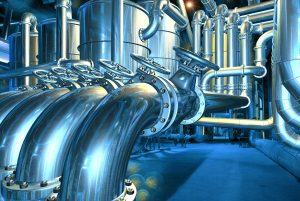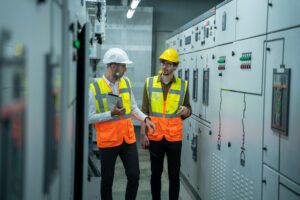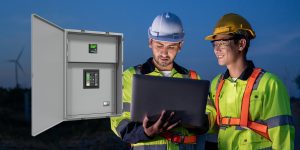Global building owners and operators recognize that much work is needed to help meet the IPCC-specified goal of limiting global warming to 1.5 °C by 2050. While many progressive organizations have taken the lead by announcing net-zero carbon ambitions, the concrete steps to achieve these goals are more challenging.
This is especially challenging for existing properties, many of which may be older buildings, of which 50% will likely be in use in 2050. The global energy crisis increases the urgency for buildings to reduce energy consumption, costs, and dependence on fossil fuels.
If you’re a facility manager, your deep knowledge of each building’s operation puts you in the ideal position to champion the journey to decarbonization. In this post, you’ll understand why it is not only crucial for the planet to decarbonize your existing buildings but also good for business. With the proper roadmap and solutions, you can accelerate the journey.

4 reasons for facility managers to lead decarbonization retrofits
Let’s look at the new pressures and opportunities pushing the need for sustainability forward.
- Comply with the newest standards and regulations. Compliance is already part of your day-to-day reality. But now, with 75% of countries committing to net zero by 2050, several mandatory and voluntary regional and national sustainable building standards and regulations are being introduced. Examples include North America’s ASHRAE Guideline 36, Europe’s Energy Performance of Buildings Directive, and Asia’s CC 2025 Energy Efficiency. You can simplify compliance with all relevant standards by replacing fossil-fuel-based loads with electric ones and retrofitting your infrastructure with the newest digital technology.
- Reduce your energy bill. Europe has been experiencing extreme energy price increases recently, but the volatility of energy costs significantly impacts the bottom line for buildings and businesses everywhere. Fines are another potential impact on the bottom line. Some regions – like New York City in the U.S. – impose strict fines for exceeding emissions limits. Retrofitting for sustainability goes beyond helping you decarbonize; it enables you to optimize and reduce energy consumption and costs while avoiding fines for non-compliance. And the cost of retrofitting can be offset by available government incentives.
- Meet and exceed the expectations of building occupants. Sustainability and well-being have become part of our social and cultural values. Employees and tenants realize existing buildings cannot fundamentally change, but they still expect to work, live and play in green and healthy buildings. Retrofitting for sustainability gives you the tools to minimize energy use and emissions and better manage indoor air quality, comfort, and more. This creates a strong differentiator for your properties, making them more attractive to existing and potential occupiers. The profile of your business and buildings will benefit by demonstrating your decarbonization and occupant well-being efforts in your environmental, social, and governance (ESG) reporting.
- Manage old and complex buildings more efficiently. Many existing buildings have aging and inefficient equipment, and larger buildings are becoming increasingly complex due to more automation and power-sensitive loads. Today’s buildings often contain a pyramid of legacy products, temporarily fixed with ad-hoc solutions. How can you change this and operate your building more efficiently? Bringing sustainability in-house to focus on decarbonization helps streamline managing aged facilities with various levels of digitalization and simplifies managing complex facilities using smaller in-house teams.
A proven, 3-step roadmap to success
Transforming your properties to all-digital, all-electric buildings help enable sustainability by reducing your carbon footprint, energy, and operational costs while improving resilience and building health. But to ensure success, you need a structured roadmap to follow. Schneider Electric offers and proven 3-step approach to retrofit any type and size of building.
- Strategize. Determine where you are on the sustainability roadmap, establish baselines, evaluate opportunities, build your business case, engage stakeholders, find funding/incentives, and develop your action plan.
- Digitize. Choose the best digital technologies to monitor your assets and make the invisible visible, using analytics that delivers the valuable insights you need to reveal the best ways to reduce energy consumption and emissions while optimizing occupant well-being.
- Decarbonize. Take action to manage energy consumption actively, swap fossil-fueled energy sources for cleaner electric options like a renewable energy microgrid, decarbonize your value chain, and pursue green certifications such as LEED and BREEAM.
Schneider Electric is an experienced partner that offers comprehensive world-class connected devices, software, services, and consultative experts to help you accelerate your sustainability retrofit journey. To learn more, download our Retrofit for Sustainability eGuide, and complete the checklist to take your first step in turning sustainability ambition into action. The next post of Damien Dhellemmes will take a deeper look at starting the net-zero retrofit journey.



